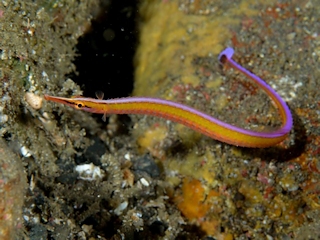
Tisis is a genus of small moths in the family Lecithoceridae. The genus was erected by Francis Walker in 1864.

Cydia pactolana, the spruce bark tortrix, is a moth of the family Tortricidae. It is found in central, northern and eastern Europe as well as Siberia. In Japan, the subspecies Cydia pactolana yasudai is present.
Lyonetia yasudai is a moth in the family Lyonetiidae. It is known from Honshu, the main island of Japan.
Ypsolopha yasudai is a moth of the family Ypsolophidae. It is known from Japan, Korea, north-eastern and central China and Russia.
Eupithecia yasudai is a moth in the family Geometridae. It is found in Nepal.
Acleris yasudai is a species of moth of the family Tortricidae. It is found in Japan (Honshu). The wingspan is 20–21 mm. The larvae feed on Enkianthus campanullatus and Enkianthus campanullatus var. sikokianus.
Eucosma yasudai is a species of moth of the family Tortricidae. It is found in Russia and Japan.
Tisis amabilis is a moth in the family Lecithoceridae. It was described by Kyu-Tek Park in 2003. It is found on Sabah in Malaysia.
Tisis asterias is a moth in the family Lecithoceridae. It was described by Kyu-Tek Park in 2003. It is found in Thailand.
Tisis sabahensis is a moth in the family Lecithoceridae. It was described by Kyu-Tek Park in 2003. It is found on Sabah, Malaysia's easternmost state.
Tisis thaiana is a moth in the family Lecithoceridae. It was described by Kyu-Tek Park in 2003. It is found in Thailand.
Tisis aurantiella is a moth in the family Lecithoceridae. It was described by Kyu-Tek Park in 2003. It is found in Palawan in the Philippines.
Tisis sophistica is a moth in the family Lecithoceridae. It was described by Kyu-Tek Park in 2003. It is found in Palawan in the Philippines.
Tisis xantholepidos is a moth in the family Lecithoceridae. It was described by Kyu-Tek Park in 2003. It is found on Tawi-Tawi in the Philippines.
Tisis isoplasta is a moth in the family Lecithoceridae. It was described by Edward Meyrick in 1929. It is found on Java in Indonesia.
Tisis bicolorella is a moth in the family Lecithoceridae. It was described by Francis Walker in 1864. It is found on Borneo.
Tisis elegans is a moth in the family Lecithoceridae. It was described by Snellen in 1903. It is found on Java.
Tisis luteella is a moth in the family Lecithoceridae. It was described by Snellen in 1903. It is found on Java and Sabah.
Patrizia Tisi is a former Italian female long-distance runner who competed at four editions of the IAAF World Cross Country Championships at senior level. and two of the IAAF World Half Marathon Championships.

Maroubra yasudai, also known as the orange pipefish, is a species of marine fish belonging to the family Syngnathidae. This species can be found in the Izu Oceanic Park along the coast of Honshu Island, Japan. They often inhabit rocky crevices and caves at depths ranging from 28 to 30 meters. Their diet likely consists of small crustaceans such as copepods. Reproduction occurs through ovoviviparity in which the males brood eggs before giving live birth.


